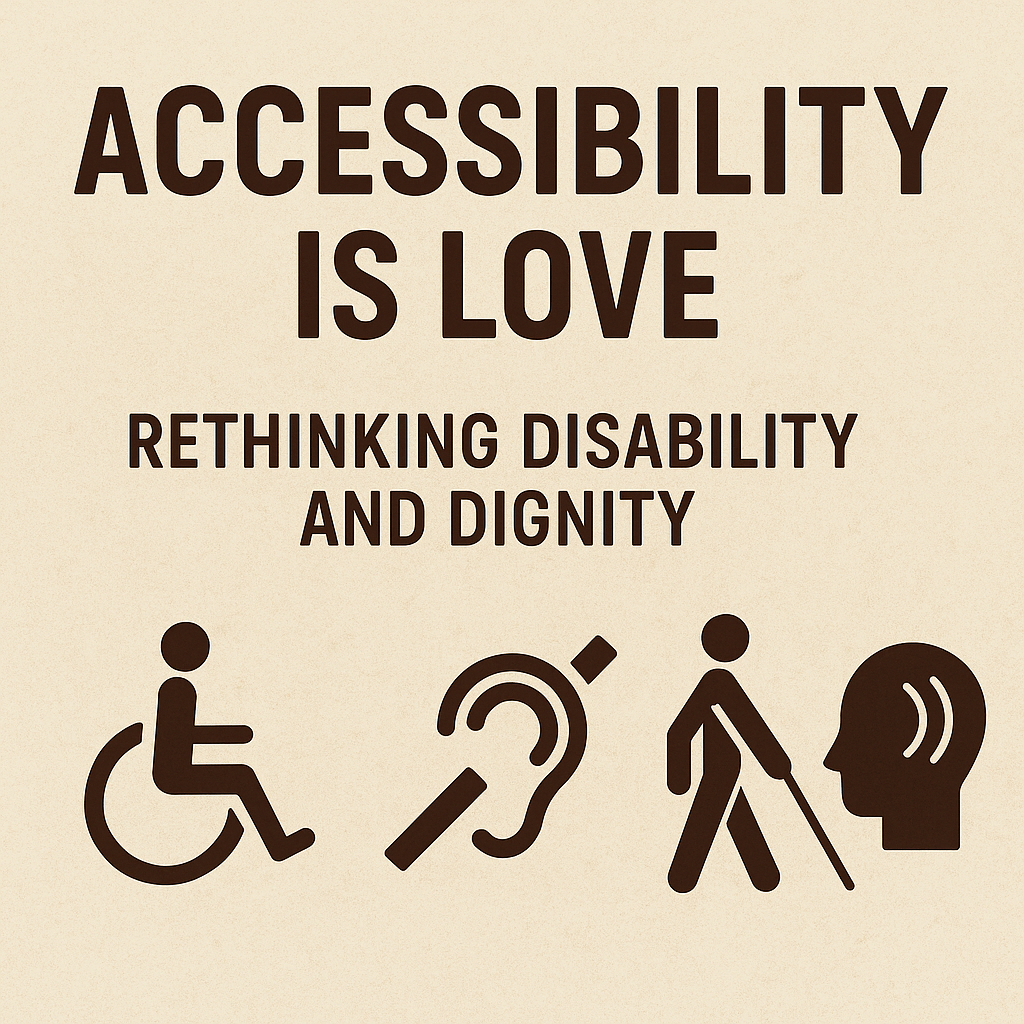Introduction
Disability is not a flaw to be hidden, corrected, or “fixed.” It is part of the vast spectrum of human diversity. Every person’s body and mind carry their own strengths and struggles, and no one should be measured against a single, narrow standard of what it means to be “normal.”
When we talk about accessibility, it’s easy for society to frame it as a matter of compliance, charity, or pity—something we “do for” disabled people. But accessibility is far more radical and more beautiful than that. Accessibility is an act of love. It’s a way of saying: you belong here, fully and equally, without condition.
Ableism: The Hidden But Powerful Form of Discrimination
Many of us are quick to recognize racism, sexism, or homophobia, but ableism often hides in plain sight. It shows up when buildings are designed with only stairs, when captions are left off videos, when workplaces fail to accommodate sensory needs, or when disabled people are treated as burdens rather than equal participants in community life.
Ableism isn’t always intentional—but that doesn’t make it less harmful. Like all systemic biases, it thrives on unexamined assumptions. “Everyone can walk up a step.” “Everyone can read small print.” “Everyone can hear well enough in a crowded room.” These assumptions create invisible barriers that exclude millions of people from opportunities, dignity, and full participation in society.
Beyond “Inspiration Porn”
One of the most insidious myths about disability is what writer and activist Stella Young famously called “inspiration porn.” This is the tendency to turn disabled people into symbols of “bravery” or “motivation” for non-disabled audiences. A photo of a child using a wheelchair captioned with “What’s your excuse?” might make some feel inspired, but it reduces that child’s life to a teaching tool for others.
Disabled people don’t exist to inspire, motivate, or serve as props in someone else’s narrative of perseverance. They exist as full human beings, with dignity, complexity, flaws, joys, and dreams—just like anyone else. True respect means valuing disabled lives for their own sake, not as moral lessons for others.
Accessibility as Belonging: Public Spaces, Workplaces, Media, and Community
Accessibility matters everywhere:
- Public spaces: Ramps, elevators, wide doorways, tactile paving, quiet rooms, and inclusive restrooms transform who gets to move freely in a city.
- Workplaces: Flexible scheduling, remote work options, screen readers, and supportive policies make employment equitable.
- Media: Captions, audio descriptions, and representation that avoids stereotypes ensure stories are for everyone.
- Community life: Events designed with sensory needs, physical access, and communication options in mind invite all members to belong.
Accessibility is not an afterthought or an “extra.” It is the foundation for inclusion. It creates a world where people don’t have to fight for the right to participate—they just can.
Intersectionality: Ableism and Other Forms of Oppression
Ableism doesn’t operate in a vacuum. It overlaps with racism, classism, sexism, and other forms of marginalization. For example:
- Disabled people of color are more likely to face healthcare inequities and police violence.
- Working-class disabled people often have the fewest resources for adaptive technology or accessible housing.
- Women and nonbinary people with disabilities are at higher risk of violence and abuse.
When we talk about accessibility, we must also acknowledge these intersections. Justice isn’t partial—it must address the full web of barriers people face.
Stories of Progress—and Gaps That Remain
There are countless stories of accessibility wins that show what love in action looks like. A ramp built at a social community building so a lifelong member could return to gatherings. Captions on live broadcasts that allow Deaf and hard-of-hearing viewers to be part of national conversations. Adaptive gaming technology that opens entire worlds of play and connection.
But alongside these victories, society continues to fail in critical ways. Public transportation remains largely inaccessible in many cities. Healthcare systems too often dismiss or misdiagnose disabled patients. Emergency planning rarely accounts for those with mobility, sensory, or cognitive needs.
These failures are not inevitable—they are choices. And if we can choose exclusion, we can also choose inclusion.
Closing: Love Dismantles Barriers
Accessibility is not just about laws, compliance, or checklists. It is about love, compassion, and justice. True love does not merely “tolerate” someone—it actively works to remove the barriers that keep them out.
When we reframe accessibility as love, we begin to see ramps, captions, flexible policies, and adaptive technologies not as burdens but as expressions of belonging. We begin to imagine communities where no one has to prove their worth to participate.
So here’s the challenge: What would compassion build if accessibility came first?
That’s a question worth carrying into every workplace, every classroom, every city meeting, every creative project, and every act of community. The answers could change everything.


